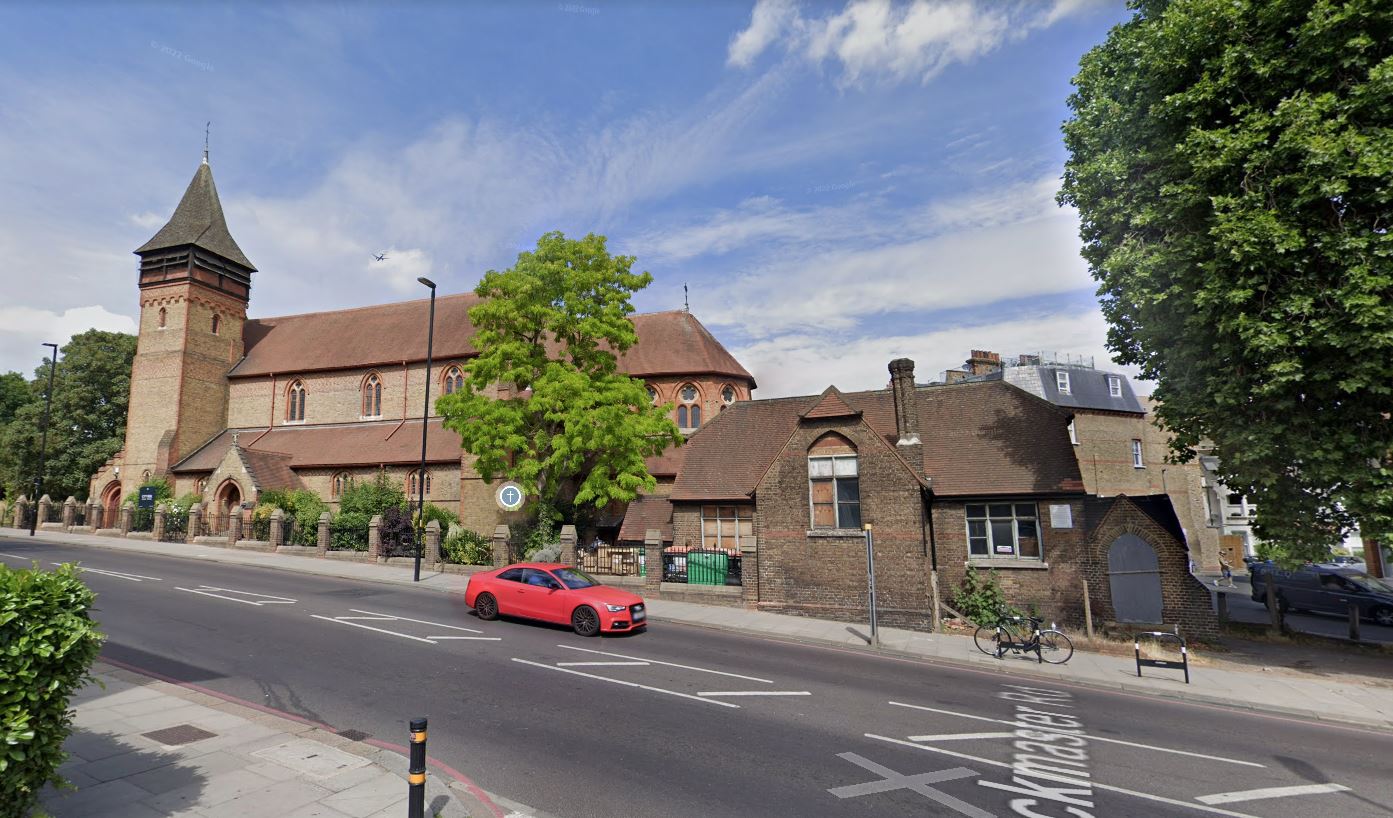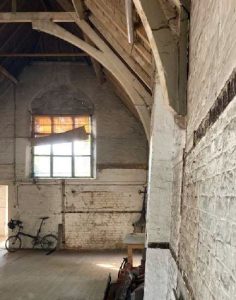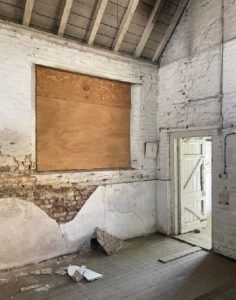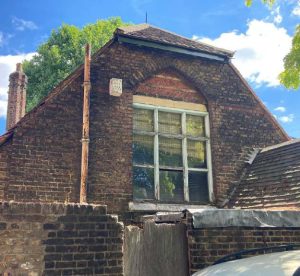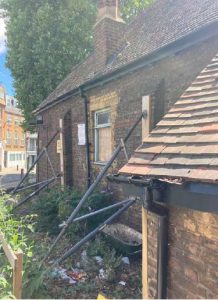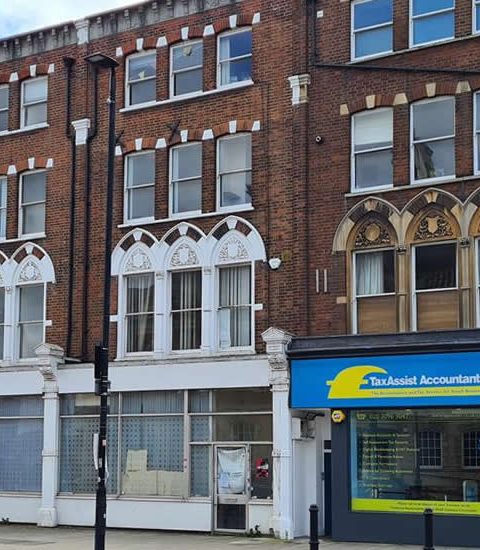There is an interesting little planning application (p.a. 2023/0662) in for the long abandoned and very fragile looking church school at the corner of Boutflower Road and Battersea rise, next to st Mark’s Church.
Dow Jones Architects has recently purchased the previous school building owned by Southwark Diocese, with the purpose of establishing it as their practice office. They are currently located in a Church Hall were they are completing a project and will have to vacate the building when it will be completed.
Their new office in Battersea Rise/Clapham Junction is intended to serve as an experiment in making a listed building suitable for modern use and as a showcase for their interest in historic architecture.
A listed building dated from the development of Clapham Junction in the 1860s
St Mark’s School is Grade II listed since January 2001. The little building is a rare and well-preserved example of a small church school that was built during the development of Clapham Junction in the 1860s.
The Church school was designed in 1866-67 by Benjamin Ferrey, a prominent church architect of that time. Ferrey was a notable figure in the Gothic Revival movement, having trained under Augustus Pugin. He gained recognition for his religious architectural works and became a favoured architect among ecclesiastical circles. Ferrey held esteemed positions in architectural societies, including the Royal Institute of British Architects (RIBA).
Ferrey may have expected to be commissioned for the nearby St. Mark’s Church, which the school is connected to, but the commission was given to William White, a slightly younger and more radical architect known for his Gothic style. White was considered a more innovative revivalist than Ferrey, particularly known for his involvement in the Queen Anne style.
Together, the two buildings form an impressive architectural ensemble.
The abandoned building has many structural problems and is in a poor state
Despite being listed and recognized as an asset dating back to the early days of Clapham Junction, the building is currently in a poor state and has been empty and unused for nearly a quarter of a century.
Southwark Diocese carried out maintenance and repairs to the roof and rainwater goods and implemented structural support to the north wall early in 2018.
With its poor state of repair, the building is currently on the Heritage at Risk Register.
In their planning application documents, the architects explain that there are cracks in every wall, and a number of windows are missing. The north wall leans out and is currently supported by external scaffold buttresses.
Initially, they suspected that some damage might have been caused by the plane tree planted after the building was erected. However, upon closer inspection with their structural engineers, they now believe that some issues have been caused by the spreading of the roof structure, leading to the rotation of the wall. The seasonal moisture caused by the plane tree (which they plan to retain) may still be responsible for the cracking of the brick joints seen throughout the building.
A project to restore and renovate the building
Discussions have been ongoing between the Local Authority, Historic England and the new owners regarding the re-use, extension, and alteration of the building.
Dow Jones Architects aim to renovate the designated structure and eliminate its inclusion in the Heritage at Risk Register. They are planning to carry out fabric repairs on a ‘like for like’ basis using traditional materials and techniques.
To restore the building, they have established a detailed strategy, including strapping the arch-braced trusses together at eaves level to prevent further spreading of the roof, thus allowing for the removal of the exterior support. They also propose to remove the north chimney to reduce load and reinforce some of the larger internal cracks with joints.
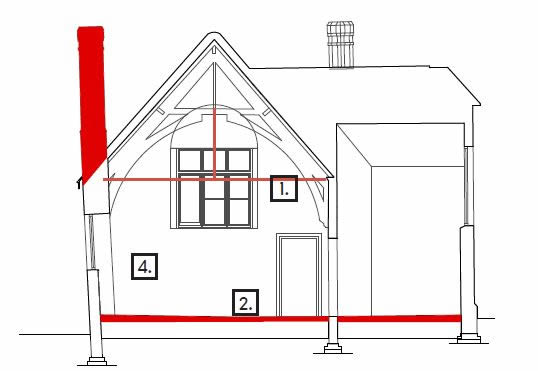
Their strategy involves insulating the building to enhance its carbon footprint and offering modernized facilities that adhere to sustainable practices (including a air-to-air heat pump), thus ensuring its longevity for years to come.
They also plan to extensively plant increase biodiversity on the site so that they can both enjoy the space that surrounds the building as a garden and provide something for the many passersby to benefit from.
As multi-award winners (including the Civic Trust award, the Architects Journal Retrofit award, and the Public Buildings Architects of the Year Award), they have extensive experience in working on Grade I and Grade II listed buildings, including Christ Church Spitalfields, Garden Museum, Bevis Marks Synagogue in London, and Leach Pottery in St Ives, Cornwall.
In their application document, they state:
“Our approach is always to respect the character of the listed buildings and to develop a project that responds to the fundamental nature of the building and its setting. This demands having a clear knowledge of its history and development, and understanding the techniques of construction that it embodies.
We have worked on extensions and remodelling of listed buildings of all grades, in Conservation Areas, UNESCO World Heritage Sites, Sites of Special Scientific Interest and Areas of Outstanding Natural Beauty.”
St Mark’s Church was not entirely convinced by the proposal and the Vicar wrote to the Council to express concerns, especially regarding access to the crypt with a lock gate which could be a safety hazard in the event of a fire, and the car access which will prevent off street parking.
However, the architects have informed us that these elements have been discussed with the Church, and changes have been made accordingly. For example, the style of the fence will now be consistent with the one used in the church, maintaining a cohesive aesthetic.
Dow Jones Architects is expected to receive planning consent soon and begin the work promptly to ensure completion before the end of the year. We could potentially have a revitalized Grade II building by the start of 2024!


